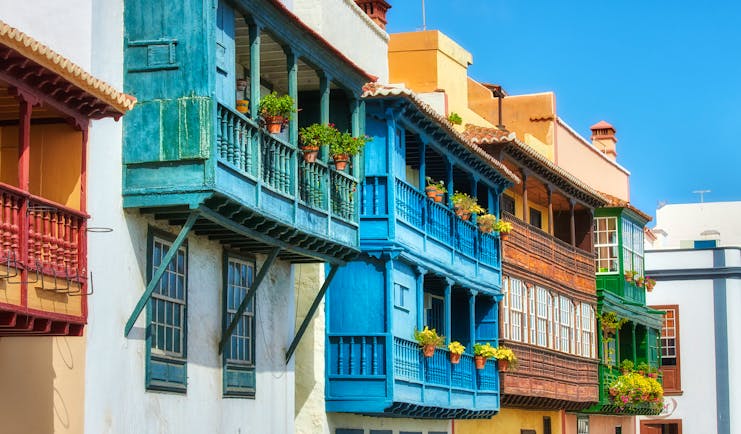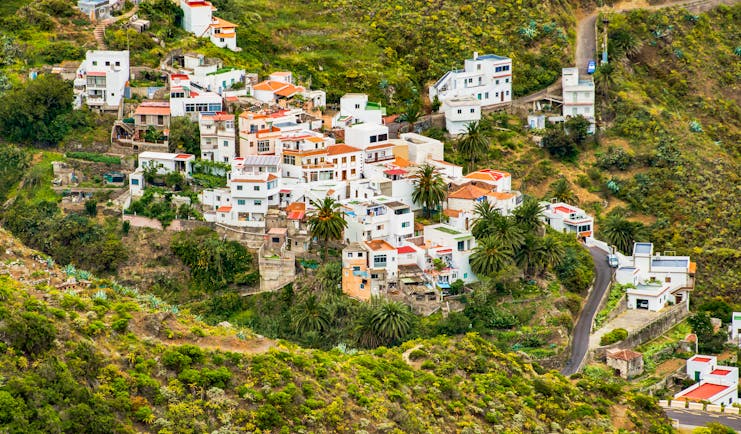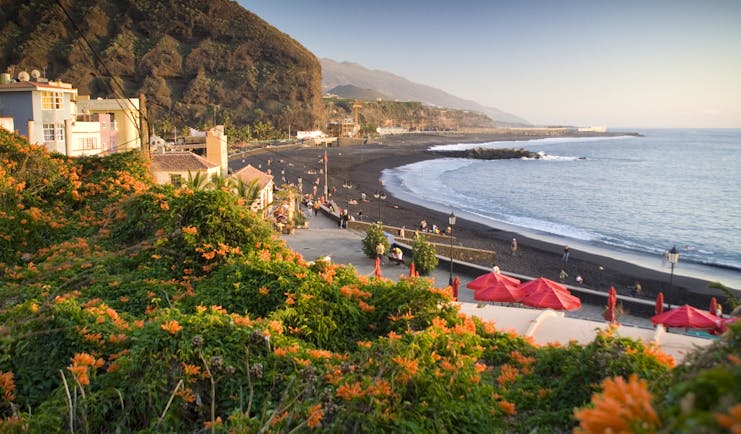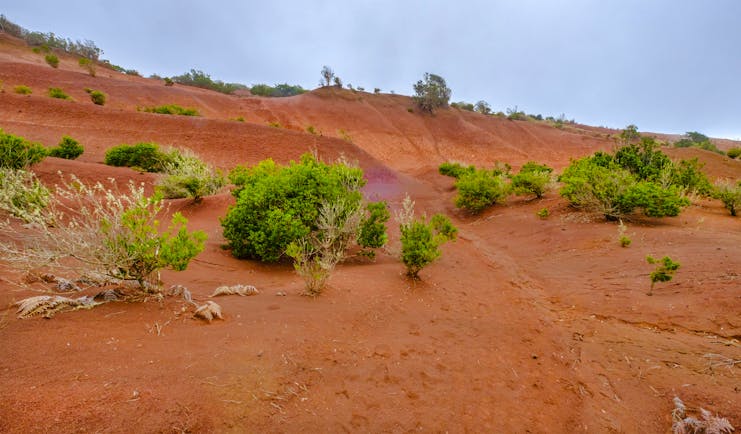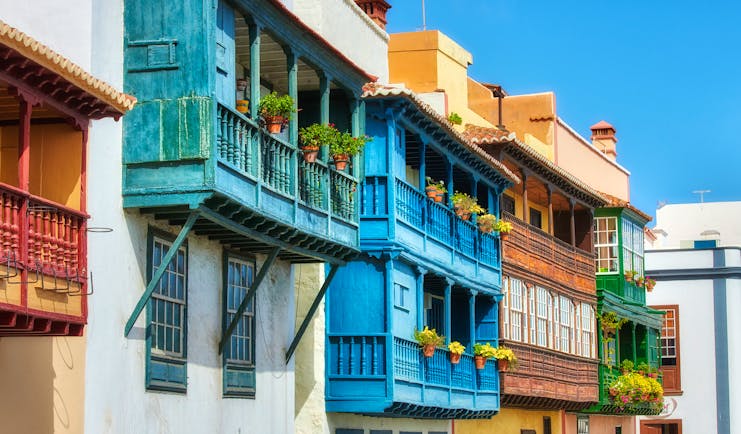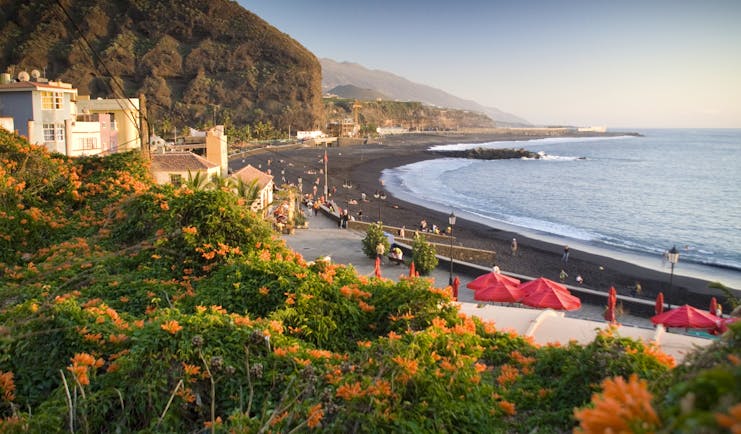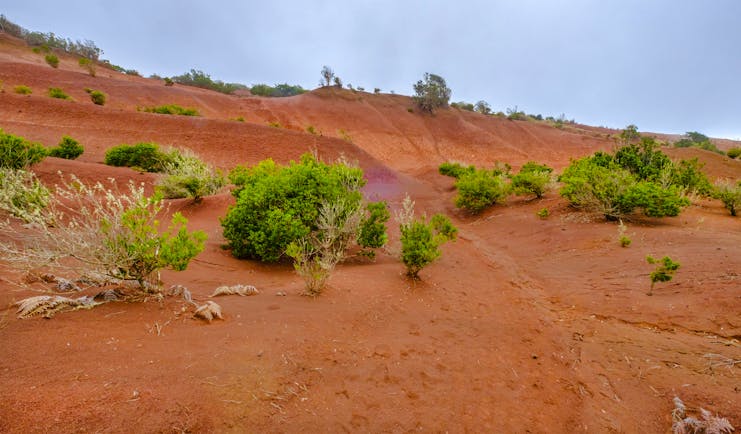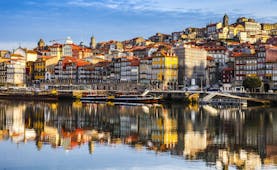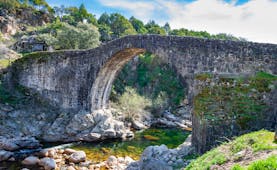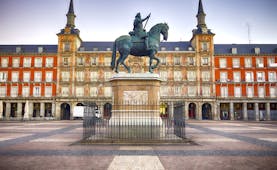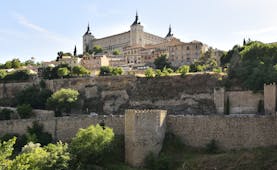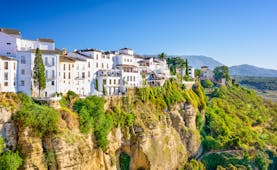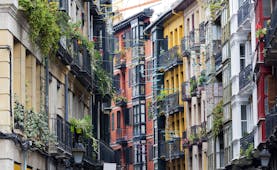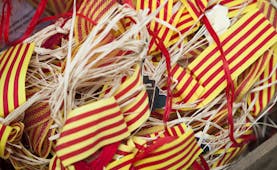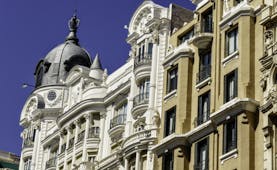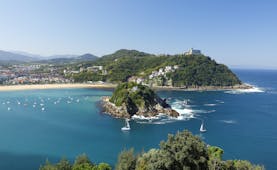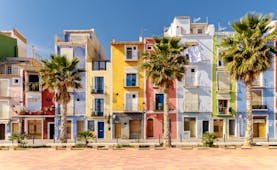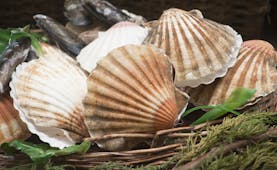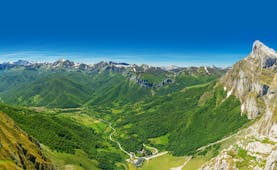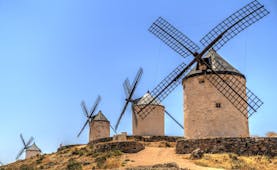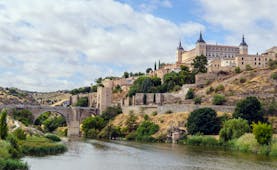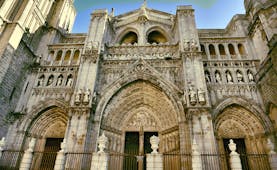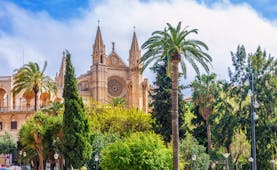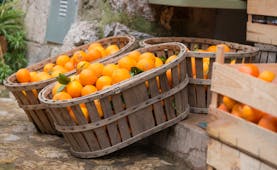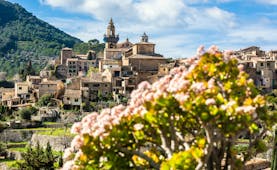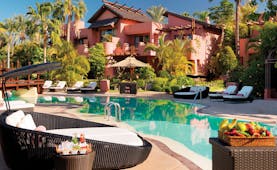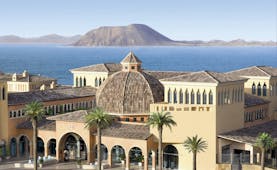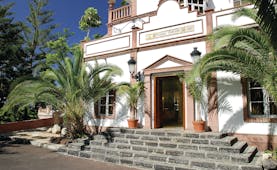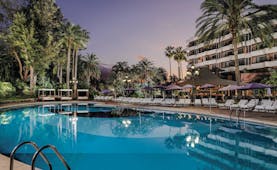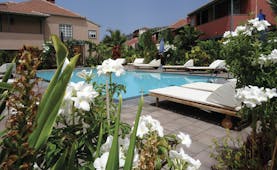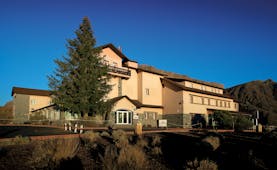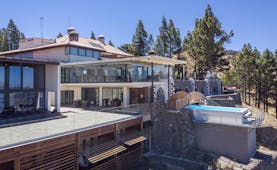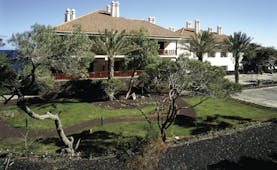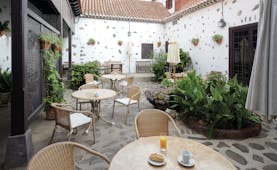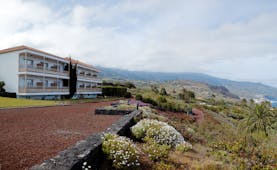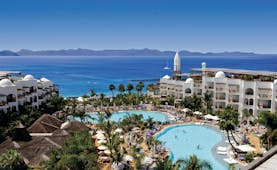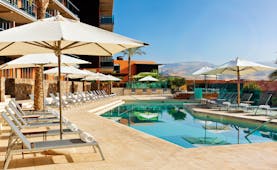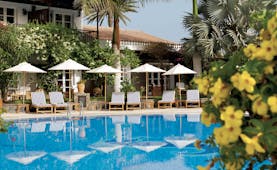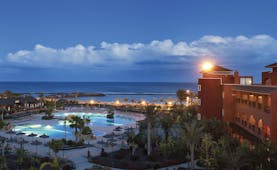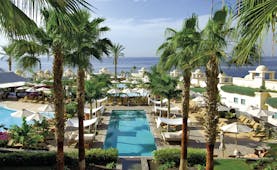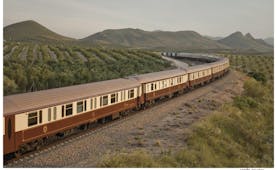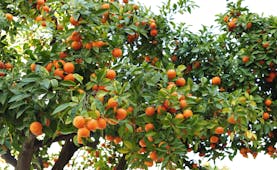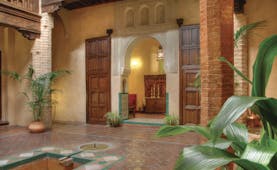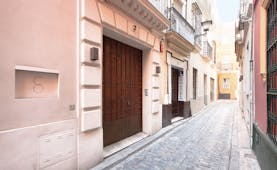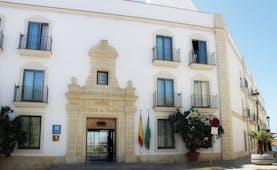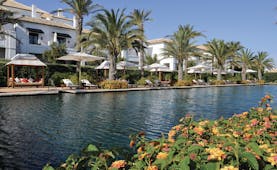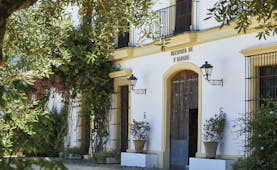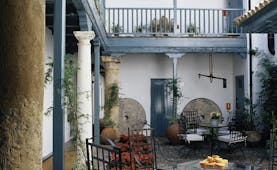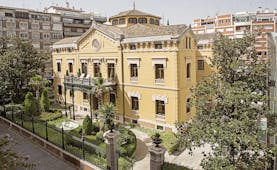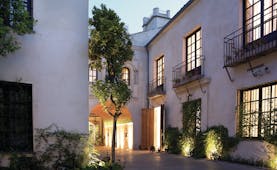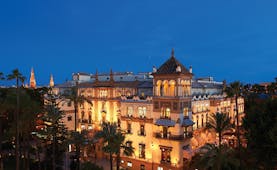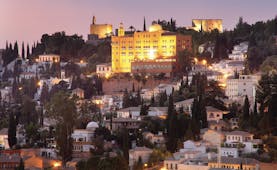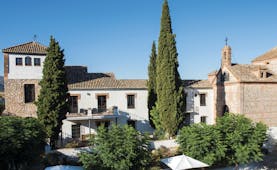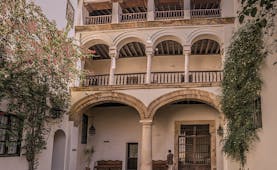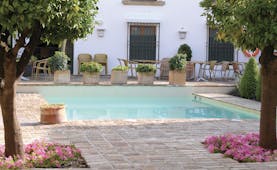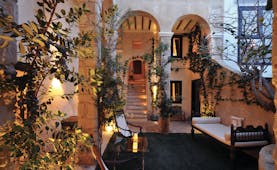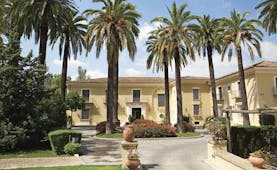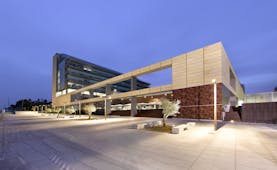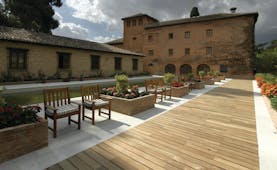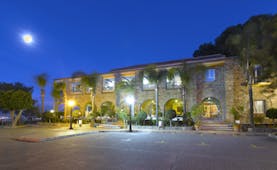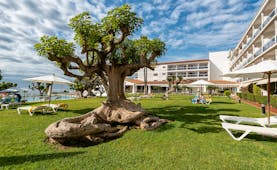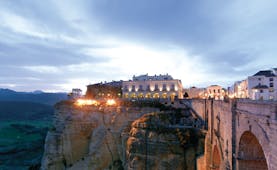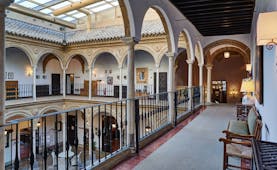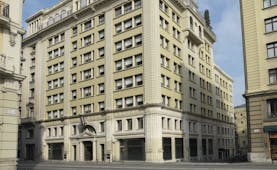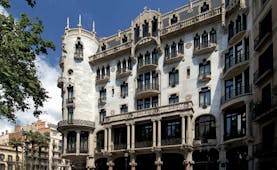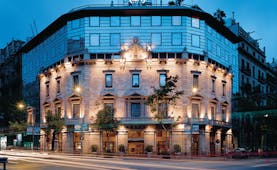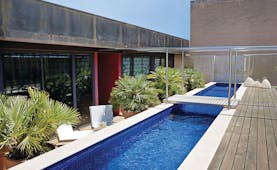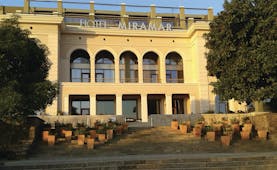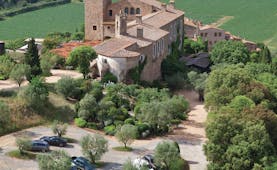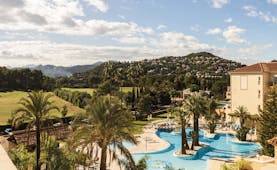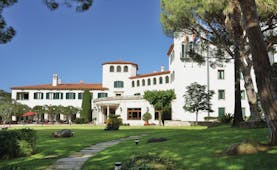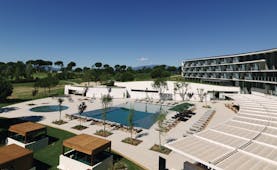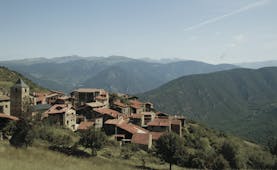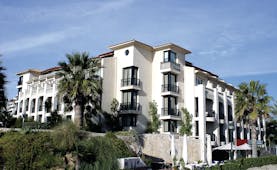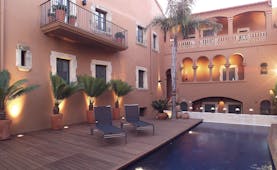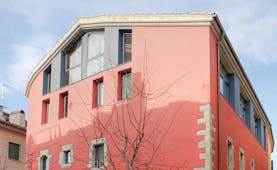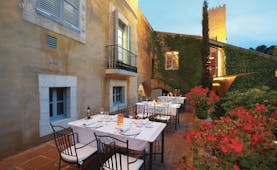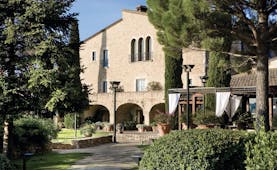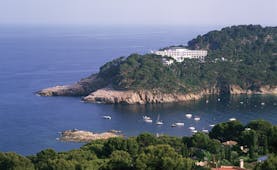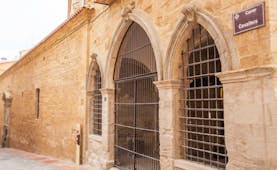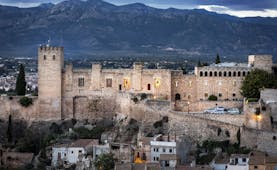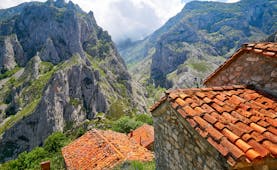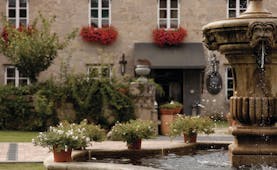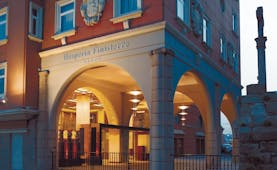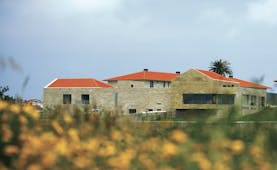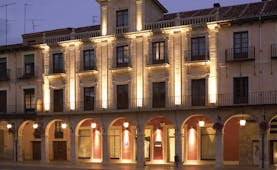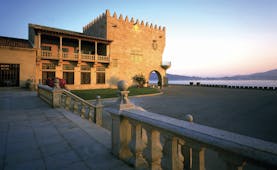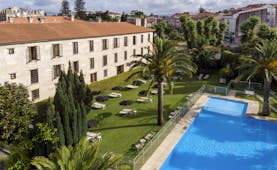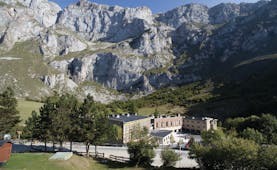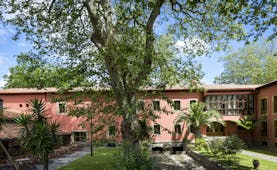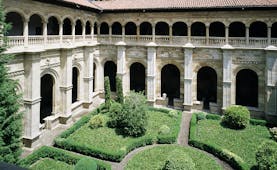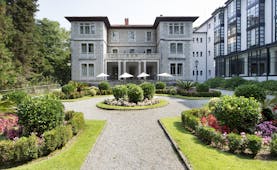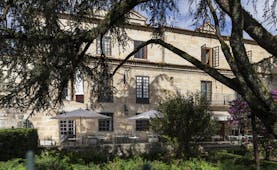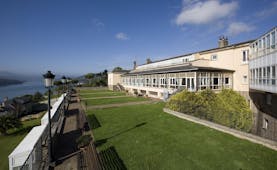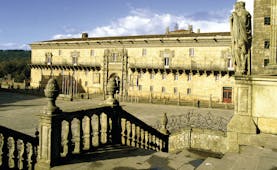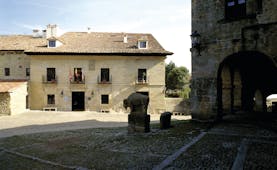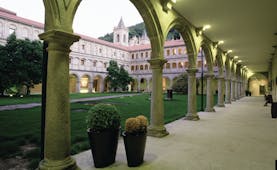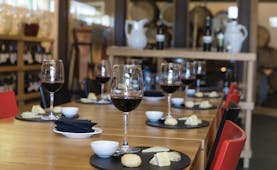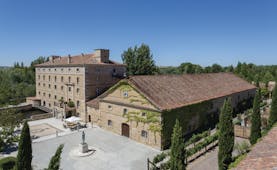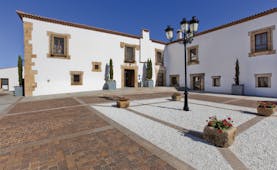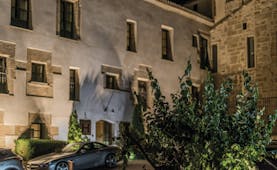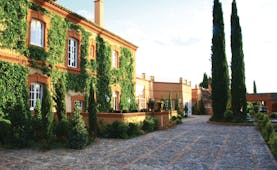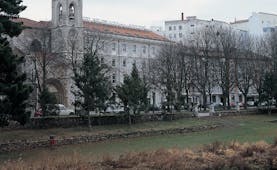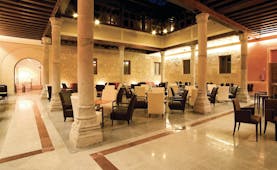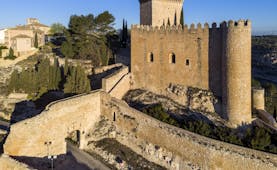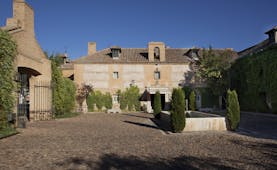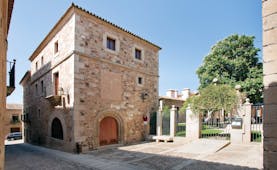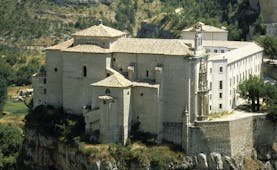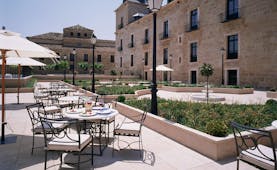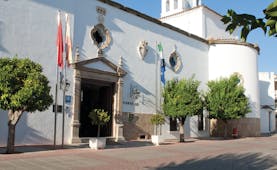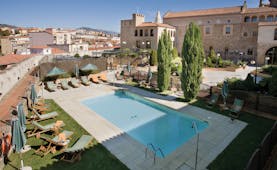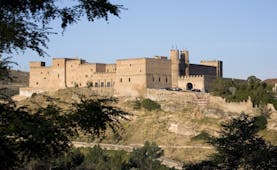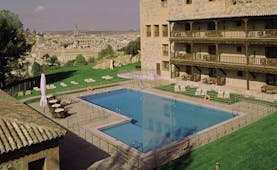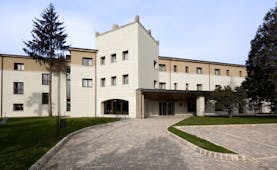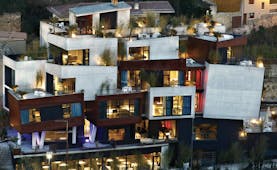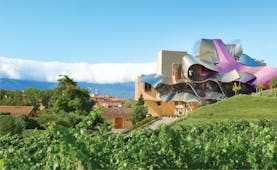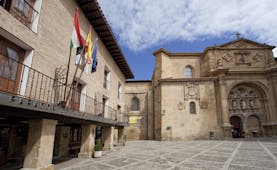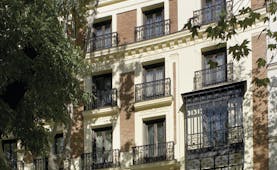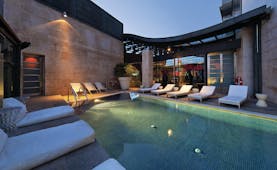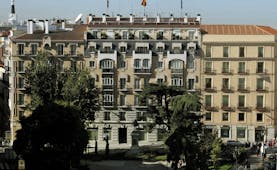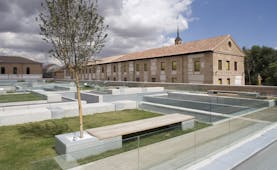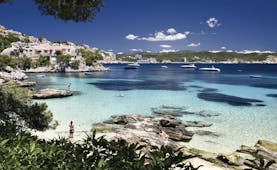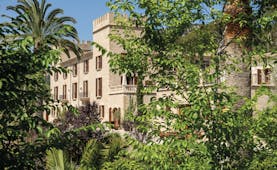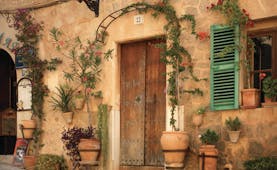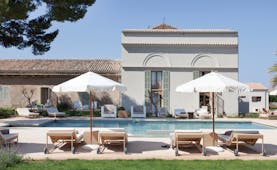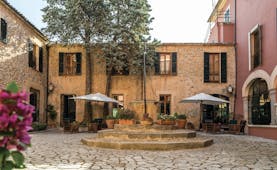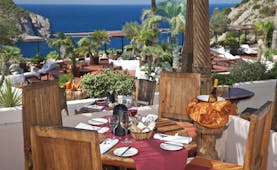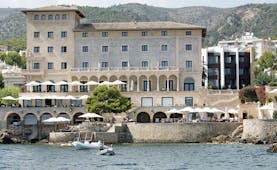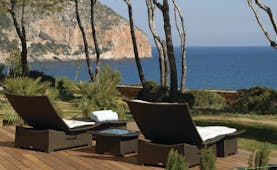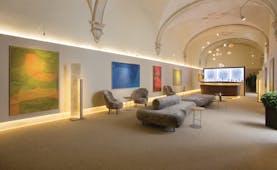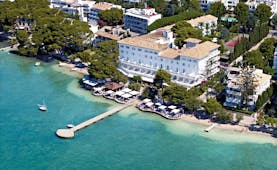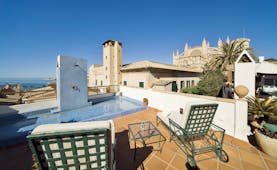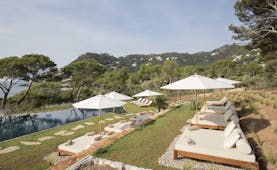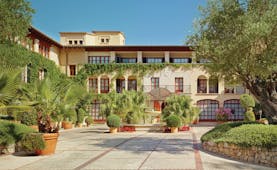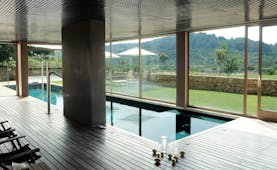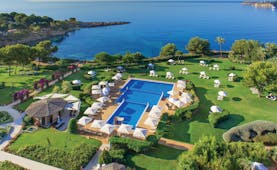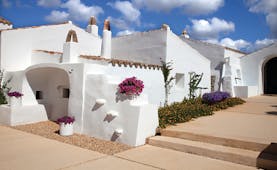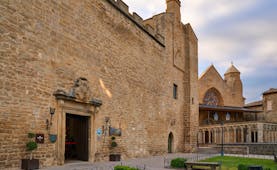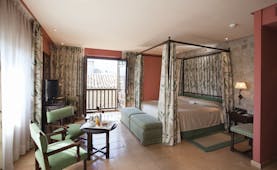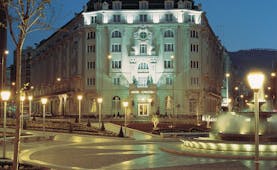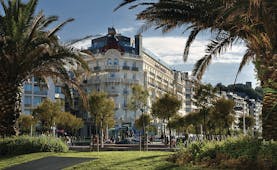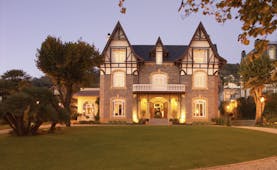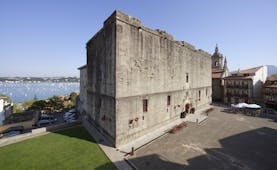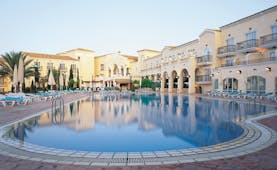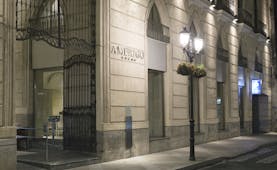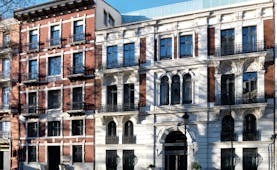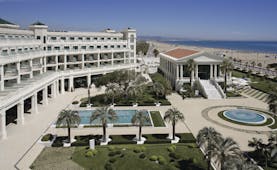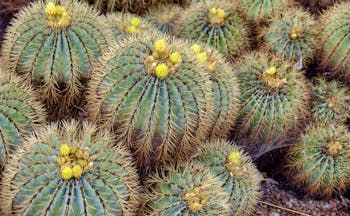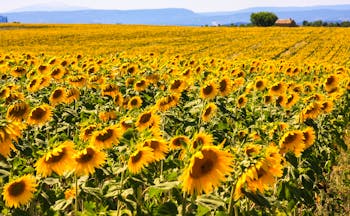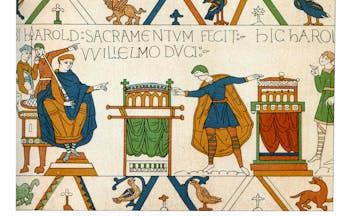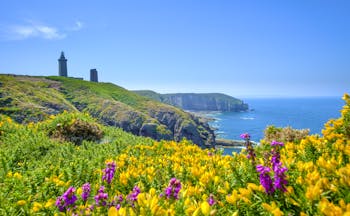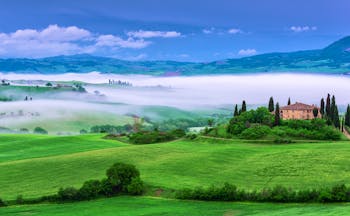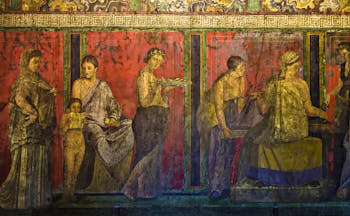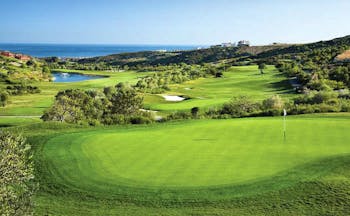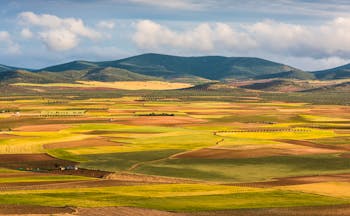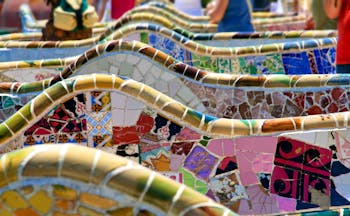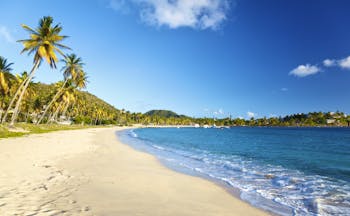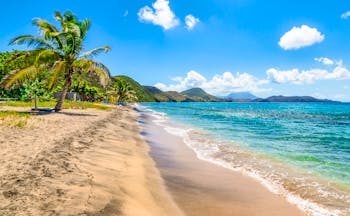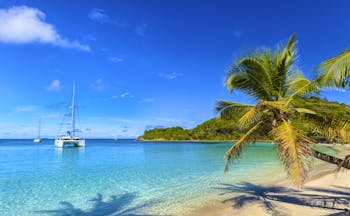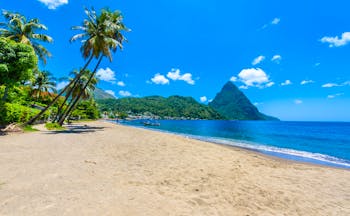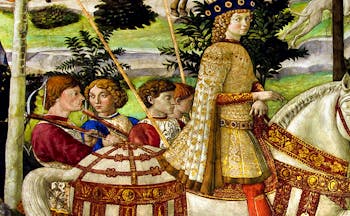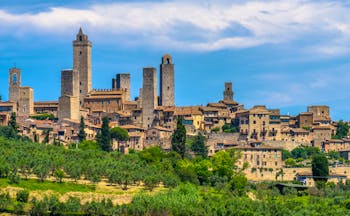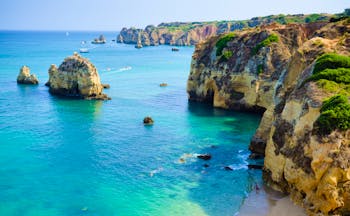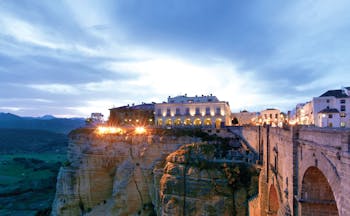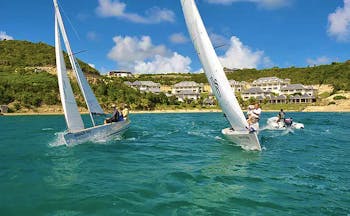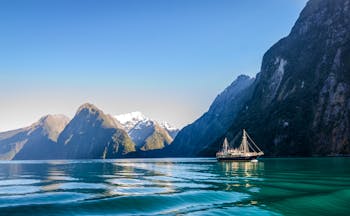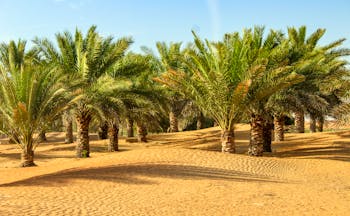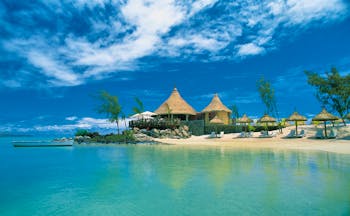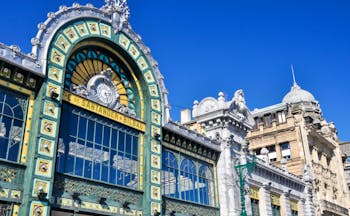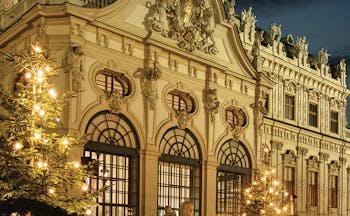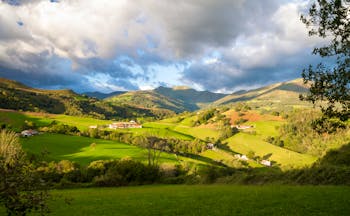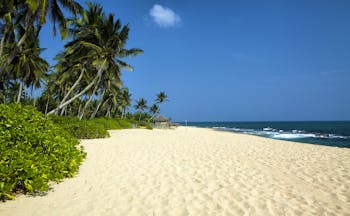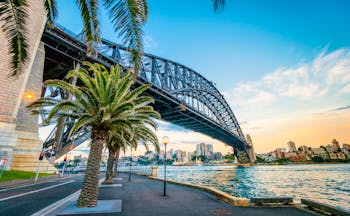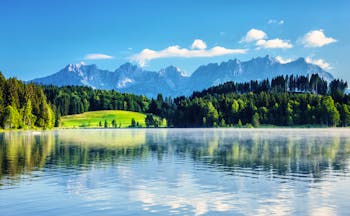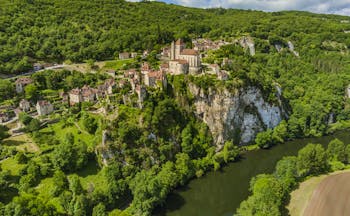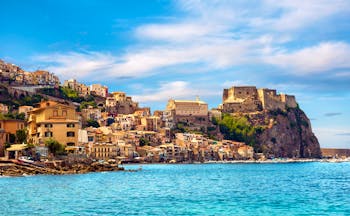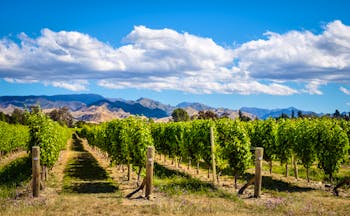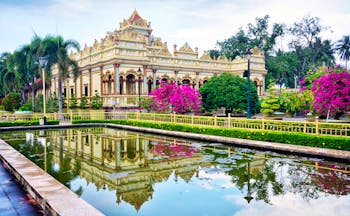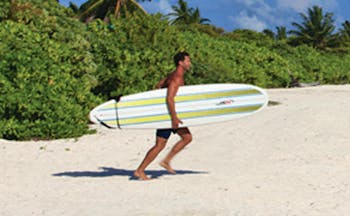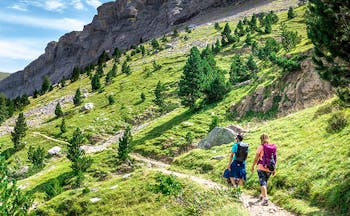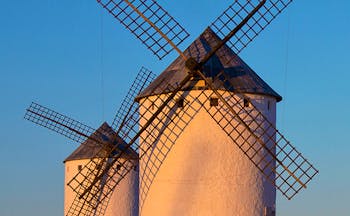Luxury fly-drive touring holiday of the western Canaries visiting Tenerife, La Gomera, La Palma and El Hierro
This 12-night fly-drive touring holiday of the western Canaries gives you an in-depth appreciation of the islands of Tenerife, La Gomera, La Palma and El Hierro, with a focus on the natural and man-made wonders of these islands, from caves to volcanic craters, mythical trees to colourful wooden houses. This Canary island fly-drive touring holiday begins in Tenerife at the Parador de La Canadas del Teide. High on the slopes of Mount Teide, this traditional lodge allows its guests to experience first-hand the wonders of such a dynamic island. Hike through the National Park, explore the archaeological sites, or simply relax on one of the golden or black sandy beaches. On your third day, catch a ferry across to the second island, La Gomera. For the next three nights, you will stay at the Parador de La Gomera, a typically Canarian property with astounding views across the sea from its hillside position. Relax on the pool terrace, explore the squares and promenade of the old town of San Sebastián, or wander along the mysterious pathways of the misty Garajonay National Park, renowned for its dense forests of ferns and laurel rain forest. From La Gomera, catch another ferry across to La Palma, known as ‘the Pretty Island’. The dramatic landscape of this volcanic island is best appreciated in the Fuencaliente region, on the very southern tip of the island. Hop from crater to crater through the National Parks or follow the trail of natural saltwater pools around the coast, before retiring on each of your three nights to the Parador de La Palma. Your final island is El Hierro, which can only be accessed via a connecting ferry back on Tenerife. This longer journey takes you past all of the islands on this tour, so you can see their rising peaks from a new perspective. This self-sustainable island is riddled with ancient forests and quirky inland landmarks, but it is by the sea that the real charm of El Hierro comes into its own. Dive with one of the local businesses in the La Restinga Marine Reserve to see the colourful tropical marine life and the formidable lava formations. Spend three nights at the Parador de El Hierro, which is secluded in a tranquil, uninterrupted location between the volcanic mountains and the azure sea. Return to Tenerife and round off the holiday with one night by the beach on the Costa Adeje before your return flight to the UK. (We recommend that you begin this tour on a Saturday due to ferry timetables).
Highlights
Tenerife • Mount Teide national park • Millennial Dragon Tree • Tenerife History Museum • La Gomera • Plaza de Las Américas • La Gomera • Garajonay National park • La Palma • Caldere de Taburiente National Park • Punta Fuencaliente • El Hierro • Charco Azul • Punta de Orchilla
Day by day
Begin your touring holiday by flying into Tenerife South Airport, where we suggest you collect a hire car before driving one-hour northwards into the Teide National Park. The Parador de Las Cañadas del Teide is your hotel for your first two nights. The main attractions of this simple mountain lodge are the spectacular views of the volcano, Mount Teide, at the centre of the island. We recommend that you begin this tour on a Saturday due to ferry timetables.
Visitors can take in the dramatic surroundings, hike in the Teide National Park which makes up your remarkable surrounding scenery, visit nearby archaeological sites, wander through charming old towns, take a boat trip, or enjoy the attractions of the busy coastal resorts. A number of historical sites of interest sit just over an hour from the idyllic, secluded hotel. The Pyramids of Güímar are on the eastern side of the island, stand 4 metres high, and have mysterious, elusive origins. The on-site museum aims to shed a little light on their beginnings, via its connections with the maritime explorer, Thor Heyerdahl. It also houses the boats believed to have been built by ancient civilisations. The intriguing nearby Poison Garden holds 70 kinds of toxic plant. Go from manmade phenomena to the wonders of the natural world by heading northeast of your hotel to the Cueva del Viento, one of the largest volcanic tubes in the world, which is connected to a vast network of underground tunnels on three levels that come together in the cave in Icod de los Vinos. You may also wish to visit the 800-year old Millennial Dragon Tree, which grows beside the ancient burial zones of Tenerife’s aborigines in the Parque del Drago. The Tenerife History Museum at La Laguna is housed in the Casa Lercaro palace with a wooden overhanging façade. Inside, it holds Canarian art, fascinating artefacts such as restored 18th and 19th century carriages, and archaeological exhibits such as the wells that once fed the houses of Tenerife’s villages. For a taste of the more touristy side to Tenerife, head down to the Playa de las Américas on the shore of Los Cristianos; or, for a more secluded beach with dark sand, drive and then hike to the Roque Bermejo on the very northern tip of the island. La Caleta, just north of Los Cristianos, is another beautiful beach, but this time with typically Spanish golden sand. Once you have had your fill of the many diverse attractions of Tenerife, have dinner on the open terrace back at the Parador de las Cañadas del Teide, with the green countryside and rugged mountains as your backdrop.
After exploring each corner of Tenerife, drive your hire car to Los Cristianos port in the south-west corner of the island to catch a lunch-time ferry to the island of La Gomera. You will spend your next three nights at the Parador de La Gomera hotel in San Sebastián, a typically Canarian-style property located just above the island’s port.
Explore the charming and interesting old town of San Sebastián on foot or stroll along the harbour lined with colourful boats. From here, walk along the promenade that takes you through to Plaza de Las Américas. Have lunch or dinner in one of the bars, with the wooden balconies and rustic clock tower of the Town Hall behind you. Wednesday in San Sebastián is market day, so and early arrival will allow you to witness the local ‘Gomeras’ fill the streets with lively noise and colour. Use this opportunity to pick up some Palm Honey, lace, jewellery, and maybe one of the local spicy sauces. Spend Tuesday on one of San Sebastián’s beaches, either the Playa de San Sebastián or the Playa de la Cueva. Alternatively, you can pick up a hire-car and drive into the mountainous interior of the island, where you can walk through fertile valleys and evergreen forests. Be sure to take the time to explore the atmospheric groves and pathways of the Garajonay National park. Its gnarled and twisted moss-covered trees and its gushing waterways give the place an ethereal feel. Dense ferns and laurel grow on its highest slopes. To the north sits the beautiful small town of Agulo, with its white-washed buildings and stepped agricultural coastline. Something of a hidden paradise on La Gomera, this makes an excellent afternoon trip, and has some good restaurants. On the western side of the island the Valle Gran Rey marks the parting of two vast hills, which opens onto a delightful beach. A somewhat surreal sight, this area really demonstrates the beauty of this particular Canary Island. In the evening, return to the hotel to relax in the lush gardens, or beside the pool, with views back across the water to Tenerife and Mount Teide. Your traditional room is visibly influenced by the hotel’s maritime position, as well as by Castilian, Isabelline, and Canarian styles.
You have the majority of today at leisure in San Sebastian before taking an evening ferry, this time bound for the quiet island of La Palma. The Parador de La Palma, your hotel for two nights, is just south of the Santa Cruz de la Palma’s port in Beña Baja, set within vast gardens filled with bright tropical plants and views over the Atlantic Ocean.
Known as ‘the Pretty Island’ and officially a Biosphere Reserve, La Palma’s natural environment is fantastically diverse. Visitors can fill their days by following the walking trails through the volcanic Caldere de Taburiente National Park, built around an 8-kilometre-wide crater. With the benefit of a car, the whole island becomes easily accessible. Fuencaliente is La Palma’s southern-most region. This region, though sparse and fairly undeveloped, is the perfect place to get to grips with the island’s natural environment. Examine the marine life in rock pools, explore the dramatic volcanic landscape on foot or by car, stop off at the Teneguia and San Antonio volcanoes, walk along the black sandy beaches and coves, dine in a restaurant in the charming main town, and investigate the small picturesque villages such as Las Indias and Los Canarios. On the Punta Fuencaliente, the southern point, are two lighthouses and a museum, with spectacular coastal views. To uncover the remarkable underwater world of La Palma, with its cliffs, ridges, canyons, caves, and volcanic formations, either inquire at the La Palma Diving Centre in Beña Baja, drive 15 minutes south to Los Cancajos, or drive west to Puerto Naos, also home to the longest black sand beach on the island. The villages of San Andrés and Los Sauces are traditional and small, but their coastlines offer pretty, natural saltwater pools. For something a little different, drive across the island to Puerto Tazacorte to see its technicolour beach promenade and dine in one of the seafood restaurants. With such a rich array of activities, this small island is perhaps the most satisfying on this tour, and the views from your hotel really seem to sum up La Palma’s beauty.
Enjoy lunch on your last day in La Palma and then board a ferry back to Los Cristianos in southern Tenerife. Here you change boats and then continue onwards to the island of El Hierro, where you will arrive around 10pm. Drive from the port to the Parador de El Hierro, a peaceful and secluded hotel tightly nestled between volcanic slopes and a black-sand beach. Stay here for three nights.
Spend time relaxing in the hotel’s gardens, by the pool or on your private balcony – all of which overlook the magnificently blue Atlantic Ocean. As another UNESCO World Biosphere Reserve, the natural landforms on El Hierro are as spectacular as can be expected. Thanks to the new hydroelectric plant, El Hierro is now 100% self-sustainable, a fact that is carried on the atmosphere conveyed by the enthusiastic and welcoming locals, and the exclusive effect of its dramatic horizon. Drive out to the Punta de Orchilla cape, which marked the Zero Meridian line until 1885, and which still gives El Hierro its nickname of ‘the Meridian Isle’. The 2011 underwater volcanic eruption has reformed the submarine landscape, adding caves, lava arches, and cliffs; combined with the fully-recovered plethora of beautiful tropical marine life, this new landscape makes for excellent diving. The La Restinga Marine Reserve in particular has an abundance of vibrant tropical fish. Inland, explore on foot the ancient forests, and seek out the Garoé Tree, which once supplied the local residents with water from its leaves. At La Peña viewpoint, you can look out across what are reputedly the best views of the ocean and the El Golfo valley. While here, sample some of the delicious Canarian food in a local seafront restaurant. The Frontera Rural Park is also worth a short visit. One of only three places in the world where this particular type of forest can grow, the park is laced with twisted junipers whose treetops rise only eight metres off the ground. On the north side of the island is the serene Charco Azul. This warm seawater pool is heated by its volcanic bed and is encased in a seafront cave. A wonderfully tranquil spot at which to spend a few hours one morning or afternoon, this is perhaps El Hierro’s most enchanting feature.
On the penultimate day of your holiday, you board an afternoon ferry back to Los Cristianos port. Drive a little way northwards to the Costa Adeje and check into La Plantacion del Sur for your final night. Just ten minutes’ walk from a golden sand beach, Vincci Seleccion La Plantacion del Sur is a five-star hotel focusing on relaxation and indulgence. This is the perfect place to round off your holiday in style. Your holiday can be extended by adding further time here for extra relaxation before returning home.
Your hotel in Tenerife is located just a 15-minute drive from Tenerife South airport. Spend the rest of the day enjoying a leisurely breakfast here, visiting the Playa del Duque beach or enjoying the spa and pools at the hotel before returning to the airport. Drop-off your car at the airport and fly home.
I wanted to thank you for organising such a great trip - we have absolutely loved it. Really it couldn’t have all gone better - thank you for organising it so perfectly for us.Mrs C, June 2024
Holiday price guide Prices from £3,260 per person based on two people sharing a double or twin room.
Holiday Code SNFD10
Call us on 01392 441245
Luxury fly-drive touring holiday of the western Canaries visiting Tenerife, La Gomera, La Palma and El Hierro
Begin your touring holiday by flying into Tenerife South Airport, where we suggest you collect a hire car before driving one-hour northwards into the Teide National Park. The Parador de Las Cañadas del Teide is your hotel for your first two nights. The main attractions of this simple mountain lodge are the spectacular views of the volcano, Mount Teide, at the centre of the island. We recommend that you begin this tour on a Saturday due to ferry timetables.
Visitors can take in the dramatic surroundings, hike in the Teide National Park which makes up your remarkable surrounding scenery, visit nearby archaeological sites, wander through charming old towns, take a boat trip, or enjoy the attractions of the busy coastal resorts. A number of historical sites of interest sit just over an hour from the idyllic, secluded hotel. The Pyramids of Güímar are on the eastern side of the island, stand 4 metres high, and have mysterious, elusive origins. The on-site museum aims to shed a little light on their beginnings, via its connections with the maritime explorer, Thor Heyerdahl. It also houses the boats believed to have been built by ancient civilisations. The intriguing nearby Poison Garden holds 70 kinds of toxic plant. Go from manmade phenomena to the wonders of the natural world by heading northeast of your hotel to the Cueva del Viento, one of the largest volcanic tubes in the world, which is connected to a vast network of underground tunnels on three levels that come together in the cave in Icod de los Vinos. You may also wish to visit the 800-year old Millennial Dragon Tree, which grows beside the ancient burial zones of Tenerife’s aborigines in the Parque del Drago. The Tenerife History Museum at La Laguna is housed in the Casa Lercaro palace with a wooden overhanging façade. Inside, it holds Canarian art, fascinating artefacts such as restored 18th and 19th century carriages, and archaeological exhibits such as the wells that once fed the houses of Tenerife’s villages. For a taste of the more touristy side to Tenerife, head down to the Playa de las Américas on the shore of Los Cristianos; or, for a more secluded beach with dark sand, drive and then hike to the Roque Bermejo on the very northern tip of the island. La Caleta, just north of Los Cristianos, is another beautiful beach, but this time with typically Spanish golden sand. Once you have had your fill of the many diverse attractions of Tenerife, have dinner on the open terrace back at the Parador de las Cañadas del Teide, with the green countryside and rugged mountains as your backdrop.
After exploring each corner of Tenerife, drive your hire car to Los Cristianos port in the south-west corner of the island to catch a lunch-time ferry to the island of La Gomera. You will spend your next three nights at the Parador de La Gomera hotel in San Sebastián, a typically Canarian-style property located just above the island’s port.
Explore the charming and interesting old town of San Sebastián on foot or stroll along the harbour lined with colourful boats. From here, walk along the promenade that takes you through to Plaza de Las Américas. Have lunch or dinner in one of the bars, with the wooden balconies and rustic clock tower of the Town Hall behind you. Wednesday in San Sebastián is market day, so and early arrival will allow you to witness the local ‘Gomeras’ fill the streets with lively noise and colour. Use this opportunity to pick up some Palm Honey, lace, jewellery, and maybe one of the local spicy sauces. Spend Tuesday on one of San Sebastián’s beaches, either the Playa de San Sebastián or the Playa de la Cueva. Alternatively, you can pick up a hire-car and drive into the mountainous interior of the island, where you can walk through fertile valleys and evergreen forests. Be sure to take the time to explore the atmospheric groves and pathways of the Garajonay National park. Its gnarled and twisted moss-covered trees and its gushing waterways give the place an ethereal feel. Dense ferns and laurel grow on its highest slopes. To the north sits the beautiful small town of Agulo, with its white-washed buildings and stepped agricultural coastline. Something of a hidden paradise on La Gomera, this makes an excellent afternoon trip, and has some good restaurants. On the western side of the island the Valle Gran Rey marks the parting of two vast hills, which opens onto a delightful beach. A somewhat surreal sight, this area really demonstrates the beauty of this particular Canary Island. In the evening, return to the hotel to relax in the lush gardens, or beside the pool, with views back across the water to Tenerife and Mount Teide. Your traditional room is visibly influenced by the hotel’s maritime position, as well as by Castilian, Isabelline, and Canarian styles.
You have the majority of today at leisure in San Sebastian before taking an evening ferry, this time bound for the quiet island of La Palma. The Parador de La Palma, your hotel for two nights, is just south of the Santa Cruz de la Palma’s port in Beña Baja, set within vast gardens filled with bright tropical plants and views over the Atlantic Ocean.
Known as ‘the Pretty Island’ and officially a Biosphere Reserve, La Palma’s natural environment is fantastically diverse. Visitors can fill their days by following the walking trails through the volcanic Caldere de Taburiente National Park, built around an 8-kilometre-wide crater. With the benefit of a car, the whole island becomes easily accessible. Fuencaliente is La Palma’s southern-most region. This region, though sparse and fairly undeveloped, is the perfect place to get to grips with the island’s natural environment. Examine the marine life in rock pools, explore the dramatic volcanic landscape on foot or by car, stop off at the Teneguia and San Antonio volcanoes, walk along the black sandy beaches and coves, dine in a restaurant in the charming main town, and investigate the small picturesque villages such as Las Indias and Los Canarios. On the Punta Fuencaliente, the southern point, are two lighthouses and a museum, with spectacular coastal views. To uncover the remarkable underwater world of La Palma, with its cliffs, ridges, canyons, caves, and volcanic formations, either inquire at the La Palma Diving Centre in Beña Baja, drive 15 minutes south to Los Cancajos, or drive west to Puerto Naos, also home to the longest black sand beach on the island. The villages of San Andrés and Los Sauces are traditional and small, but their coastlines offer pretty, natural saltwater pools. For something a little different, drive across the island to Puerto Tazacorte to see its technicolour beach promenade and dine in one of the seafood restaurants. With such a rich array of activities, this small island is perhaps the most satisfying on this tour, and the views from your hotel really seem to sum up La Palma’s beauty.
Enjoy lunch on your last day in La Palma and then board a ferry back to Los Cristianos in southern Tenerife. Here you change boats and then continue onwards to the island of El Hierro, where you will arrive around 10pm. Drive from the port to the Parador de El Hierro, a peaceful and secluded hotel tightly nestled between volcanic slopes and a black-sand beach. Stay here for three nights.
Spend time relaxing in the hotel’s gardens, by the pool or on your private balcony – all of which overlook the magnificently blue Atlantic Ocean. As another UNESCO World Biosphere Reserve, the natural landforms on El Hierro are as spectacular as can be expected. Thanks to the new hydroelectric plant, El Hierro is now 100% self-sustainable, a fact that is carried on the atmosphere conveyed by the enthusiastic and welcoming locals, and the exclusive effect of its dramatic horizon. Drive out to the Punta de Orchilla cape, which marked the Zero Meridian line until 1885, and which still gives El Hierro its nickname of ‘the Meridian Isle’. The 2011 underwater volcanic eruption has reformed the submarine landscape, adding caves, lava arches, and cliffs; combined with the fully-recovered plethora of beautiful tropical marine life, this new landscape makes for excellent diving. The La Restinga Marine Reserve in particular has an abundance of vibrant tropical fish. Inland, explore on foot the ancient forests, and seek out the Garoé Tree, which once supplied the local residents with water from its leaves. At La Peña viewpoint, you can look out across what are reputedly the best views of the ocean and the El Golfo valley. While here, sample some of the delicious Canarian food in a local seafront restaurant. The Frontera Rural Park is also worth a short visit. One of only three places in the world where this particular type of forest can grow, the park is laced with twisted junipers whose treetops rise only eight metres off the ground. On the north side of the island is the serene Charco Azul. This warm seawater pool is heated by its volcanic bed and is encased in a seafront cave. A wonderfully tranquil spot at which to spend a few hours one morning or afternoon, this is perhaps El Hierro’s most enchanting feature.
On the penultimate day of your holiday, you board an afternoon ferry back to Los Cristianos port. Drive a little way northwards to the Costa Adeje and check into La Plantacion del Sur for your final night. Just ten minutes’ walk from a golden sand beach, Vincci Seleccion La Plantacion del Sur is a five-star hotel focusing on relaxation and indulgence. This is the perfect place to round off your holiday in style. Your holiday can be extended by adding further time here for extra relaxation before returning home.
Your hotel in Tenerife is located just a 15-minute drive from Tenerife South airport. Spend the rest of the day enjoying a leisurely breakfast here, visiting the Playa del Duque beach or enjoying the spa and pools at the hotel before returning to the airport. Drop-off your car at the airport and fly home.
I wanted to thank you for organising such a great trip - we have absolutely loved it. Really it couldn’t have all gone better - thank you for organising it so perfectly for us.Mrs C, June 2024
Holiday price guide Prices from £3,260 per person based on two people sharing a double or twin room.
Holiday Code SNFD10
Our prices include
● Scheduled return flights with British Airways from London to Tenerife South, economy
● Ferries between the islands for car and two passengers
● Hire of a Group C car for the duration of your trip
● 2 nights’ bed and breakfast in a Standard room at the Parador de las Canadas del Teide
● 3 nights’ bed and breakfast in a Standard room at the Parador de La Gomera
● 3 nights’ bed and breakfast in a Standard room at the Parador de La Palma
● 3 nights’ bed and breakfast in a Standard room at the Parador de El Hierro
● 1 night’s bed and breakfast in a Superior room with side sea view at La Plantacion del Sur
● Concierge service and Expressions Holidays regional helpful hints
Our prices do not include
● Early check-in or late check-out at any hotels (although we can arrange this on request at additional cost)
● Any other services not mentioned above, such as transfers and meals except breakfast at hotels
● Personal holiday insurance. This is essential and cover should be in place from when you book the holiday.
● Local tourist tax, usually between Euros 1 and 3 per person per night, and payable locally to the hotel
Additional information
Travel times for this touring holiday
Tenerife South to Parador de la Cañadas del Teide 1 hour 5 minutes
Parador de la Cañadas del Teide to Parador de la Gomera 2 hours 15 minutes
Parador de la Gomera to Parador de la Palma 3 hours 15 minutes
Parador de la Palma to Parador de El Hierro 9 hours 25 minutes
Parador de El Hierro to Vincci La Plantacion del Sur 3 hours 20 minutes
Vincci La Plantacion del Sur to Tenerife South 15 minutes
Call us on 01392 441245
Luxury fly-drive touring holiday of the western Canaries visiting Tenerife, La Gomera, La Palma and El Hierro
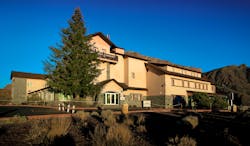
Parador de Las Cañadas del Teide is boutique hotel, nestled in amongst a sublime and dramatic rural landscape. This country hotel is perfect for enjoying the secluded natural landscape of Tenerife.
Standard room

Parador de La Gomera is a 4-star hotel in a stunning clifftop location. Exquisite local cuisine and comfortable, luxurious accommodation make it a sublime base from which to explore the dynamic scenery and beautiful beaches of the local area.
Standard room
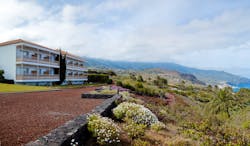
Parador de La Palma is a 4-star boutique hotel with magnificent panoramic views. Delicious local cuisine, a stunning wellness area, and beautifully serene gardens afford guests a truly relaxing and serene experience.
Standard room
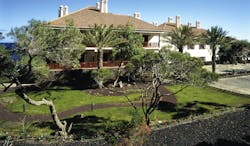
Situated right on the seafront on the undeveloped island of El Hierro in the Canaries, the Parador de El Hierro is a three star hotel with a pervading sense of seclusion and exclusivity.
Standard room
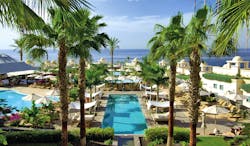
Vincci Seleccion La Plantacion del Sur is a 5-star resort in a beautiful coastal location. This hotel boasts beautiful tropical gardens, an excellent spa and delicious dining facilities alongside luxurious accommodation to afford guests a truly relaxing and restorative experience.
Superior room with side sea view
I wanted to thank you for organising such a great trip - we have absolutely loved it. Really it couldn’t have all gone better - thank you for organising it so perfectly for us.Mrs C, June 2024
Holiday price guide Prices from £3,260 per person based on two people sharing a double or twin room.
Holiday Code SNFD10
Call us on 01392 441245
Luxury fly-drive touring holiday of the western Canaries visiting Tenerife, La Gomera, La Palma and El Hierro
About Canary Islands
An Expressions tailor-made holiday to the Canary Islands includes a selection of four and five star beach resorts which cater for families and couples alike. The Canary Islands can be found sitting off the western coast of Africa in the Atlantic Ocean. Warmed by year-round sunshine, the Canaries feature otherworldly landscapes of volcanic craters, lava deserts and cute coves with black-sand beaches. Meanwhile, steep hillsides and terraced farmland gives way to peaceful fishing villages and characterful old towns. In the west of the archipelago are the mountainous islands of Tenerife, La Palma, El Hierro and La Gomera. Expect black-sand beaches and buzzing resorts along Tenerife's coastline whilst the interior is dominated by the dormant Mount Teide volcano. Meanwhile the three smaller islands remain relatively unspoiled, with landscapes including terraced hillsides, craggy cliffs and subtropical rainforests. The eastern isles consist of Gran Canaria, Fuerteventura and Lanzarote, each with a unique atmosphere and plenty of attractions. Gran Canaria is home to sprawling resorts as well as stunning scenery with forests, mountains and sand dunes; Fuerteventura is an arid and sparsely populated island with a desert-like landscape and long stretches of white sand beaches; while Lanzarote is a rugged island where lava flows have solidified to create a lunar landscape which contrasts with sandy beaches and green valleys. Due to their location in the Atlantic Ocean just 60 miles away from the coast of Morocco, the Canary Islands' cultures fuse African, Latin American and European influences, creating a unique identity which is quite different to that of the Iberian Peninsula. Contrary to popular belief, there is no want for authenticity here....
Highlights of the Canary Islands
There is great variation between the different islands which make up the Canaries, with each destination offering much for visitors to enjoy during their luxury holiday. Tenerife: Teide National Park, an area surrounding the volcano with stunning natural landscapes. Traditional towns such as La Orotava and La Laguna. The Museum of Fine Arts in Santa Cruz de Tenerife. Fuerteventura: Untouched white- and black-sand beaches which surround the island. Betancuria, the island's former capital which is now a picturesque town. Primitive stone dwellings in the village of Poblado de la Atalayita. Lanzarote: The Fire Mountains, a number of volcanoes which form part of Timanfaya National Park. The modern yet charming city of Arrecife. Teguise, an old-fashioned town which hosts a weekly market with folk dancing. Volcanic caves at Jameos del Agua. Gran Canaria: Picturesque towns and fishing villages such as Puerto do Mogán and Agaete. Undulating sand dunes at Maspalomas, a protected nature reserve. Botanical gardens in Tarifa. Cave complexes in the valley of Barranco de Guayadeque. Views of the volcanic crater at the Caledra de la Bandama. The old quarter of the island's capital, Las Palmas de Gran Canaria. La Palma: Santa Cruz de la Palma, the island's colourful capital where you will find cobbled streets, buildings with pretty wooden balconies and a full-sized replica of Columbus' ship. Caldera de Taburiente National Park, set in a volcanic crater at the island's centre. Picturesque villages including El Paso which is still known for its silk production. El Hierro: The extensive network of walking trails which traverse the volcanic interior of the island, designated a UNESCO Biosphere Reserve. Natural seawater pools along the coastline, as well as excellent scuba diving opportunities. La Gomera: San Sebastián, the island's main town where Christopher Columbus stayed before sailing to the New Wold. Stunning natural scenery including terraced hillsides, subtropical rainforest, dramatic gorges, steep cliffs, picturesque coves and black-sand beaches. Garonjay National Park, a UNESCO World Heritage Site
Gastronomy of the Canary Islands
Due to the geographical location, gastronomy in the Canary Islands incorporates elements of Spanish, African and Latin American cuisine. A staple of Canarian cuisine is fish, which may be grilled, baked, salted or dried in the sun, along with shellfish which is also abundant. Bananas and tropical fruits are all grown across the islands, whilst rum, Malvasía wine and goat's cheeses are also produced. Key ingredients include ‘Gofio’ (cornmeal which is used in bread and stews), ‘Mojo’ (a sauce which contains either coriander or chili peppers and is frequently served with fish and meat) and ‘Papas arrugadas’ (a kind of jacket potato which is cooked in salt water). Typical dishes include ‘Sancocho’ (boiled fish served with potatoes), ‘Puchero canario’ (a hearty stew made with meat and vegetables) and ‘Bienmesabe’ (an almond cream dessert).
Festivals on the Canary Islands
January to February: Canary Islands Music Festival. February: Carnival celebrations. March: Holiy week celebrations. 29 April: Festival of the Aborigines, April to May: Cheese Festivals, 30 May: Day of the Canary Islands, May/June: Corpus Christi celebrations, 14 to 15 June: Festival of Saint John, marking the beginning of summer. July: Festival of the patron saint of fisherman. July: Canary Islands Jazz festival. 14 to 15 August: Festival of Virgen del Candelaria.
Climate of the Canary Islands
The Canary Islands' year-round sunshine, clear skies and spring-like temperatures make them a suitable holiday destination for all seasons. Winters are mild with average temperatures of around 17 degrees, whilst summers are warm with temperatures of around 24 degrees. Most of the islands are cooler and wetter in the northeast thanks to the trade winds which prevent the temperatures from getting too hot in the summer.

